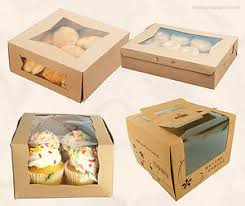Every successful bakery depends not only on its recipes but also on the materials it uses. Selecting the right paper for the bakery is a crucial factor that ensures food quality, freshness, and presentation.
From cookies to croissants, every baked product demands specific paper bags properties. Some papers must withstand oven heat, while others must resist oils or moisture. The correct choice helps maintain the bakery’s efficiency and the customer’s satisfaction.
High-quality bakery paper not only enhances product safety but also adds to the overall visual appeal. A well-wrapped pastry communicates care, cleanliness, and professionalism to every customer.
Why the Paper You Choose Matters
Bakery paper serves multiple roles—preservation, protection, and presentation. Using the right kind helps keep baked items fresh, hygienic, and visually attractive.
Poor-quality paper, however, can ruin the product experience. It might absorb grease, tear easily, or cause sticking, affecting both taste and appearance. Using durable, food-safe materials eliminates these risks.
Presentation is equally important. A well-packaged item wrapped neatly in attractive paper instantly draws attention. Many bakeries now use customized, food-safe papers from trusted suppliers like The Deli Paper to achieve this perfect combination of beauty and functionality.
Common Types of Paper Used in Bakeries
Parchment paper is one of the most versatile options. It’s heat-resistant, non-stick, and ideal for baking trays. Cakes, cookies, and pastries bake evenly and release easily without sticking or burning.
Greaseproof paper works well for wrapping oily products such as croissants or doughnuts. It prevents oil seepage and keeps packaging clean while maintaining freshness.
Butcher or kraft paper is used for heavier bakery items like bread loaves and baguettes. It provides strong protection and a natural, rustic look that appeals to many customers.
Wax paper is used for wrapping cold bakery items like cheesecakes or chocolates. It prevents moisture absorption but isn’t suitable for oven use.
Tissue and custom-printed papers are perfect for lining boxes and wrapping delicate items. When printed with your logo or design, they elevate brand identity while keeping food safe.
Key Factors to Consider When Choosing Bakery Paper
Function is the first priority. Use parchment greaseproof paper for oily goods, and kraft paper for takeaway packaging. Each type serves a specific purpose that supports bakery operations.
Grease resistance is another essential factor. Bakery items rich in butter or oil require a paper that won’t absorb fats. Greaseproof sheets maintain a neat, appealing presentation.
Durability ensures that your paper doesn’t tear or lose strength. Kraft paper is ideal for wrapping larger items, while parchment paper maintains integrity at high temperatures.
Food safety must always come first. Choose certified, food-grade materials. The Deli Paper, for example, provides fully approved and hygienic wrapping options.
Brand presentation matters too. Custom-printed wrapping not only protects food but also promotes recognition. Your packaging should reflect the same care you put into your baking.
Sustainability and Cost Efficiency in Bakery Paper
Eco-friendly packaging has become a customer expectation. Using biodegradable or recyclable papers shows that your bakery cares about the environment.
Many modern options, like compostable parchment or kraft paper, perform just as well as traditional materials but come from renewable resources. These help reduce waste while keeping packaging strong and effective.
Though sustainable papers may cost slightly more, they reduce waste and improve brand reputation, leading to loyal customers and long-term savings.
Handling and Storage of Bakery Paper
Proper handling and storage preserve paper quality. Always store paper in a cool, dry place, away from moisture and direct sunlight.
Organize papers by type—baking, wrapping, or branding—to make them easy to access during busy hours.
Training staff is equally important. Understanding which paper to use for baking or wrapping avoids waste and ensures consistency in every product.
Common Mistakes to Avoid
Using wax paper in the oven is a common error. It can melt or smoke under high heat, damaging both food and trays. Always use parchment paper for baking.
Some bakeries use decorative paper that’s not food-safe. This poses health risks. Only use certified, food-grade options.
Ignoring the presentation is another mistake. Even delicious pastries lose appeal if wrapped poorly. Quality wrapping paper adds charm and professionalism.
Enhancing Brand Identity with Custom Paper
Bakery paper can be a subtle marketing tool. A printed logo or brand name instantly communicates identity and professionalism. Customers associate your products with quality packaging.
Custom paper also helps in consistency. Whether you wrap bread or cupcakes, using the same design theme reinforces recognition and customer loyalty.
Suppliers like The Deli Paper provide food-safe custom papers that combine style with practicality, ensuring your brand stands out while maintaining safety.
Final Thoughts
Choosing the right paper for bakery operations plays a crucial role in food safety, presentation, and branding. It’s more than just packaging—it’s part of the customer experience.
Each paper type—parchment, greaseproof, kraft, or tissue—serves its own purpose. Understanding their use ensures smoother bakery management and superior results.
With reliable partners like the deli paper.com bakeries can ensure every product looks appealing, stays fresh, and reaches customers in perfect condition. Quality packaging truly complements the art of baking.
Frequently Asked Questions
Which type of paper is best for baking cookies?
Parchment paper is the best choice as it is non-stick and heat-resistant.
Can greaseproof paper be used in the oven?
It can handle warm food but isn’t suitable for direct baking.
Are custom-printed bakery papers food-safe?
Yes, when printed using food-grade inks and certified materials.
How does paper packaging enhance branding?
Custom printing promotes brand visibility and gives products a professional finish.
What’s an eco-friendly bakery paper option?
Recyclable or compostable kraft paper is an excellent sustainable choice.
